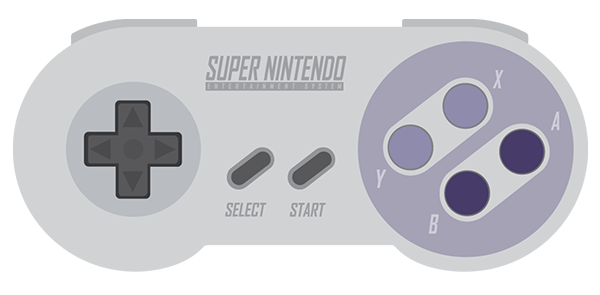The atmospheric fog rolls in, the iconic organ music swells, and you know you're about to face the forces of Dracula. For many retro gamers, this feeling is instantly tied to one game: Super Castlevania IV on the Super Nintendo. Released in 1991, this entry wasn't just a sequel; it felt like a grand reimagining, leveraging the SNES hardware to deliver a truly memorable experience.
It arrived at a time when 16-bit gaming was hitting its stride, and Konami pulled out all the stops to make Simon Belmont's latest adventure shine. It took the core Castlevania formula – whipping monsters, platforming through spooky levels, and facing off against classic horror villains – and elevated it with enhanced controls, stunning visuals, and a soundtrack that still sends shivers down your spine.
Stepping Onto the Stages: Gameplay Refined
What immediately set Super Castlevania IV apart was its gameplay fluidity. Simon Belmont felt more agile than ever before. The most significant upgrade was the whip: it could now be swung in eight directions! This wasn't just a gimmick; it fundamentally changed combat, allowing you to hit enemies above, below, and even diagonally. You could also hold the attack button to swing the whip continuously, creating a temporary shield against projectiles – a brilliant tactical addition.
Beyond the whip, Simon could also move while crouching, adding another layer of control and precision to the platforming. The sub-weapons were back – the axe, holy water, dagger, cross, and stopwatch – each consuming hearts and offering unique ways to tackle challenges. Navigating the eleven distinct stages, each filled with traps, secrets, and classic Castlevania enemy types, felt challenging but fair, thanks to these refined mechanics. The password system, while standard for the era, was a welcome feature for those long play sessions.
A Symphony of the Night: Audio & Atmosphere
Castlevania games have always been known for their music, and Super Castlevania IV is arguably the pinnacle for many fans. Masanori Adachi and Taro Kudo composed a soundtrack that perfectly captured the gothic horror vibe while delivering catchy, memorable tunes. Many tracks were stunning arrangements of classic Castlevania themes, given new life by the SNES's superior sound chip.
Beyond the music, the sound effects were crucial. The satisfying crack of the whip, the chilling cries of enemies, the clang of hitting a wall – they all contributed to the immersive atmosphere. The game successfully blended its visual and audio design to create a world that felt genuinely eerie and dangerous, drawing you deeper into Dracula's castle.
The Look and Feel: Graphics and Presentation
Konami didn't just upgrade the sound; they pushed the SNES's graphical capabilities too. Super Castlevania IV was a showcase for the system's Mode 7 capabilities, most notably used in rotating rooms or twisting corridors that added a dizzying, disorienting effect to certain levels. While perhaps simple by today's standards, these effects were groundbreaking at the time and enhanced the feeling of exploring a dynamic, unstable environment.
The sprite work was detailed, the backgrounds were richly atmospheric, and the enemy designs were classic Castlevania – skeletons, zombies, bats, and larger, more imposing bosses. The visual style leaned into the "vampire noir" praised by critics, creating a dark, moody, and incredibly stylish adventure.
Why It Endures: Legacy and Re-releases
Upon its release, Super Castlevania IV was met with widespread critical acclaim. Reviewers lauded its improved gameplay, stunning presentation, and incredible soundtrack. It quickly became regarded as one of the best games on the SNES and a high point for the Castlevania series. Its influence can be seen in later action-platformers, and its multi-directional whip mechanic remains a fan-favorite feature.
Thankfully, experiencing this classic isn't limited to hunting down original hardware. Super Castlevania IV has seen numerous re-releases over the years, appearing on platforms like the Wii, Wii U, and 3DS Virtual Console, the Super NES Classic Edition, and most notably, as part of the Castlevania Anniversary Collection available on modern consoles and PC (like on GOG and Steam). This makes it accessible to a new generation of gamers and allows veterans to easily revisit this masterpiece.
Still Worth Playing Today?
Absolutely. While gaming has evolved dramatically, Super Castlevania IV holds up remarkably well. The core gameplay loop of exploration, platforming, and combat is timeless. The controls are tight and responsive, the challenge is rewarding, and the atmosphere is second to none. Playing it today is not just a trip down memory lane; it's experiencing a masterclass in 16-bit game design. If you have access to the Castlevania Anniversary Collection or an SNES Classic, do yourself a favor and whip your way through Dracula's castle once more.
FAQ
Q: Is Super Castlevania IV a remake of the original Castlevania? A: While it shares many elements and characters with the original NES game, it's more of a reimagining or a distinct entry that builds upon the foundation rather than a direct remake.
Q: How long is Super Castlevania IV? A: A typical playthrough for a first-timer might take anywhere from 3-6 hours, depending on skill level and exploration.
Q: Can I play Super Castlevania IV on modern systems? A: Yes! It's included in the Castlevania Anniversary Collection, available on PlayStation 4, Xbox One, Nintendo Switch, and PC (via Steam and GOG).
Q: What makes the whip in Super Castlevania IV special? A: Unlike previous games where the whip only attacked forward, in SCIV you can swing it in eight directions and hold the button to wave it continuously for defense, adding much more versatility to combat and movement.
Super Castlevania IV remains a towering achievement in the action-platformer genre and a highlight of the SNES library. Its blend of refined gameplay, stunning presentation, and unforgettable music solidified its place as a true classic. Whether you played it back in the day or are discovering it through modern re-releases, Simon Belmont's 16-bit quest is an adventure every retro fan should experience.


